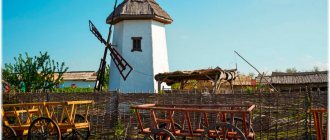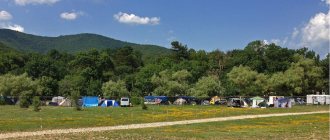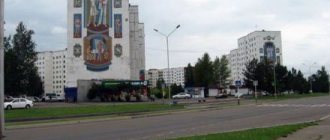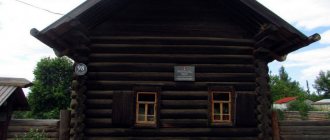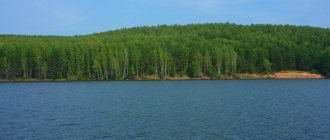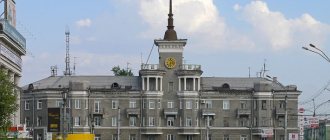For other uses, see Slavyansk (disambiguation).
City in Krasnodar Krai, Russia
| Slavyansk-on-Kuban Slavyansk | |
| Town[1] | |
| Welcome sign at one of the entrances to the city | |
| Flag Coat of arms | |
| Location of Slavyansk-on-Kuban | |
| Slavyansk-on-Kuban Location of Slavyansk-on-Kuban Show map of Russia Slavyansk-on-Kuban Slavyansk-on-Kuban (Krasnodar region) Show map of Krasnodar region | |
| Coordinates: 45°15′N 38°07′E / 45.250°N W. 38.117°E / 45.250; 38.117Coordinates: 45°15′N 38°07′E / 45.250°N W. 38.117°E / 45.250; 38.117 | |
| A country | Russia |
| Federal subject | Krasnodar region[1] |
| Based | 1865 |
| City status from | 1958[2] |
| Height | 7 m (23 ft) |
| population (2010 Census)[3] | |
| • General | 63,842 |
| • Evaluate (2018)[4] | 66,285 (+3.8%) |
| • Classify | 247th in 2010 |
| Administrative status | |
| • Subordinate | Town of Slavyansk-on-Kuban[1] |
| • Capital from | City of Slavyansk-on-Kuban[1], Slavyansky district[1] |
| Municipal status | |
| • Municipal district | Slavyansky municipal district[5] |
| • Urban village | Urban settlement Slavyanskoe[5] |
| • Capital from | Slavyansky municipal district[5], Slavyanskoye urban-type settlement[5] |
| Timezone | UTC + 3 (MSK [6]) |
| Postal code(s)[7] | 353560 |
| OKTMO I WOULD | 03645101001 |
| Web site | Sitislav.RU |
Slavyansk-on-Kuban
(Russian: Slavyansk-na-Kubani) is a town in Krasnodar Krai, Russia, located in the Kuban Delta. Population: 63,842 (2010 Census);[3]64,136 (2002 Census);[8]57,790 (1989 Census);[9]56,000 (1975).
Story
Slavyansk arose in Middle Ages as a Kop
or
Coparia
, a Genoese trading outpost controlled by the Ghisolfi family.
After the fall of Genoese power in the Black Sea region, the site was abandoned until 1747, when the Crimean Khanate erected a small fort, known in Russian sources as Kopyl
.
After the conquest of the Taman Peninsula by the Russian Empire, the Tatar fort gave way to the Cossack village
from
Kopylskaya
.
In 1865 it was renamed the Slavic Regiment, stationed here under Catherine the Great. In 1958, it was incorporated as the city of Slavyansk-on-Kuban (named to distinguish it from the city of the same name in Ukraine).[ citation needed
]. The history of Slavyansk dates back to the end of the 18th century. This city was a fortress founded by General Suvorov to protect the southern borders of Russia. In 1865 the fortress became a Cossack village. During World War II, this city was occupied by the Germans in 1942-1943, and in 1943 it was re-occupied by the Red Army. The city has monuments to those killed in the war.
According to the 1926 Soviet census, more than 69% Ukrainians lived in the city.[10]
Slavyansk-on-Kuban
The magnificent, flourishing city of Slavyansk-on-Kuban with a total area of more than 4 thousand hectares and a population of over sixty-four thousand people, today is a regional center, a significant unit in the development of Kuban. It stands on important transport arteries; roads to the ports of Novorossiysk, Temryuk, the port of Kavkaz pass through it, and the city is crossed by a railway line.
Modern Slavyansk-on-Kuban is a hard-working city. A city of oil workers and rice farmers, gardeners and builders, workers in processing industries and entrepreneurs. The city can rightly be called a student city. The Slavyansk-on-Kuban State Pedagogical Institute has been operating for more than ten years, and the Slavyansk Agricultural College has been producing qualified specialists for about 80 years. Medium and large businesses are widely developed in the city; there are more than 1,500 enterprises and more than 3,000 entrepreneurs. Successful, large enterprises contribute to the development of the city, in particular, Neftegaztenology-Energy OJSC, Cementnaya Transportnaya LLC, Slavyansky Bakery CJSC, Slavyanskaya Road Mobile Mechanized Column CJSC, Slavyansk Passenger Motor Transport Enterprise LLC, Maslosyr OJSC, OJSC "Kubrisvodstroy", CJSC Slavyansky, LLC "Gorvodokanal", OJSC Garment Factory "Slavyanskaya".
The city attracts people from all over the country with its climate, recreational conditions and hospitality of its residents; it delights the eye with wide and straight streets, magnificent squares, an abundance of flowers and greenery, new buildings in residential areas and architectural buildings of the last century.
A network of cultural institutions has been created in the city: a local history museum, an art gallery, a nature museum of the Azov region, children's art schools, interest clubs, an art school, a library system and a cinema network. The city is proud of its artistic groups: the pop symphony orchestra, the choreographic ensemble “Rhythms of the Planet”, the sacred music choir, the violin ensemble “Cantabile”, the male Cossack ensemble “Nugget”, VIA “Chance” and others. He is also proud of world-class athletes, such as Evgeniy Lukyanenko, world champion in athletics, Sergei Vodopyanov, world champion in boxing.
A network of healthcare institutions is actively developing in the city. Streets are being built, houses, shopping and entertainment complexes are being built. Many generations of Slavs lived and worked on this land, decorating it with their labors. And today, continuing the tradition of our ancestors, we are improving and greening our beautiful city.
In 2006, the Heraldic Commission under the President of the Russian Federation approved the coat of arms of the city of Slavyansk-on-Kuban, and in 2007 - the flag.
Toponymy
The name of the city comes from the name of the village of Slavyanskaya in 1958.[2] Slavyansk already existed since the times of the USSR in the Donetsk region, so the clarification “-na-Kuban” was added to the name of the city. The name of the village was given by the name of the fortification “Slavic Feldshanets” of the Slavic Hussars, which was under the command of Alexander Suvorov on the right bank of the Kuban.
In different sources, the name “Slavyansk” is made differently - by the first and second syllable, but local residents adopted the name Slavyansk by the first syllable.
Economy
- Petroleum products production
- Food industry: wine, canning, butter, cheese, rice and grain, poultry farms.
- Light industry: garment factory
- Production of building materials
Agriculture
The Slavyansky district is one of the largest agricultural regions of Kuban with a predominance of agriculture. Grain crops occupy two-thirds of the sown area. The leading direction is rice production. More than 30% of the total Kuban rice harvest is harvested in the Slavyansky region. Agricultural products are widely known in the region and beyond. This is the largest garden in Europe. In terms of gross harvest of fruits and berries (annual production volume is more than 30 thousand tons), the company ranks first in the region (26% of the total volume). Livestock farming and fishing are also developed.
Cold hospitals and traffic congestion: what is happening in the Krasnodar region
There is an apocalypse in Kuban: snowdrifts up to 25 centimeters, traffic congestion and the cheerful disposition of the locals.
In the Krasnodar Territory, a high alert regime was introduced until January 24, and in the mountains until the 25th. Until this date, rain, downpours with thunderstorms, hail and strong winds of up to 25 meters per second are predicted, in some areas up to 29 m/s. There is a danger of avalanches in the Sochi mountains.
The snow “pleased” the residents of the Crimean, Kanevsky, Slavyansky and Temryuk districts the most. The Ministry of Emergency Situations is keeping special control over the Tuapse region, the cities of Gelendzhik, Sochi and Goryachiy Klyuch due to rising river levels. In the Slavyansky region there are 48 centimeters of snow, in Krasnaya Polyana - 46 cm, in Krasnodar - 24 cm, in Krymsk and the village of Kanevskaya - 28 cm.
In Krasnodar, due to snow, a trolleybus got stuck on the tram tracks, and then Russian heroes came to the rescue.
There was a huge traffic jam on the A-147 highway “Dzhubga - border with Abkhazia”, where heavy trucks got stuck due to snow on the roads. The most difficult situation is observed in the area of the village of Dederkoy. Employees of the Russian Ministry of Emergency Situations also assisted in pulling heavy trucks out of snow drifts on the Krymsk-Novorossiysk Federal Highway.
This is how a bus in Tuapse was caught on video, which skidded to the other side of the road.
Motorists were urged to avoid traveling by transport if possible, so as not to create “artificial traffic jams” as the roads are cleared.
There was an unpleasant incident in the Tuapse region; there, in the village of Shaumyana, patients at a local hospital complained about the lack of light. The electricity has now been restored, but people have managed to freeze. It is reported that there are power outages throughout the region, and especially in the Tuapse region. They plan to deliver a generator to the hospital in case of an emergency power outage. There is a department with 60 beds and no intensive care unit.
In Sochi, a landslide occurred on the popular tourist route “Orekhovsky Falls” in the Khostinsky district.
Although in Slavyansk-on-Kuban the locals took out their skis and started skiing.
Video: s lavyansk (Telegram)
In the Tuapse region, there was snow on the train up to the windows; with a smile, the station workers tried to clear the exit from the car. In turn, the Lastochka, which was traveling from Krasnodar, got stuck in Goryachy Klyuch. Due to huge snowdrifts, the train could not open the doors; station workers had to clear them from the ice.
Passenger: “How long are we here for?”
A station worker who was clearing snow jokingly: “Until spring.”
Experts recommend being vigilant, checking the forecast, following fire safety precautions and paying attention while driving your car. The telephone number for firefighters and rescuers is “01” from the landline, and from mobile phones “101”. There is also a helpline from the Ministry of Emergency Situations.
Yana Chernikova
News on Notepad-Krasnodar
Education
There are 91 educational institutions, including 50 schools.
- Branch of Kuban State University
- Slavic Agricultural College
- Vocational school No. 45
- Vocational School No. 20
- Slavic branch of Novorossiysk Medical College
- Slavic branch of the Technological, Economic and Legal College named after. A.A. Vyazemsky
- Branch of Moscow State University of Technology and Management. K. Razumovsky
- Branch of the Moscow State Technological Academy
- Anapa branch Industrial-technical
Festival of Slavic Culture
Of all the holidays of the Slavic calendar, the Festival of Slavic Culture is, without a doubt, the most important and colorful. The full name of the holiday is the Day of Slavic Literature and Culture. There are many talented people at the festival. Guests from near and far abroad, residents of Kuban and other regions of Russia come to the Slavic region to share a piece of their soul, carefully preserving the wealth of national cultures. A lot of pies, soups and dumplings are prepared. During the festival there is a Slavic hut. Preserving traditions in this region is very important. People are proud of the traditions of their country, so they pass them on from ancestors to descendants. Organizers are the Federal Agency for Culture and Cinematography of the Ministry of Culture and Mass Communications of the Russian Federation, the regional branch of the All-Russian political party "United Russia", the administration of the Krasnodar Territory, the administration of the Slavic Territory. The history of the festival began in 2004, when the provincial city of Slavyansk with a population of 60 thousand dared to hold a show of Slavic culture on an international scale. Over the course of four years, the festival has gained popularity, constantly increasing the number of participants. This year the city again welcomes guests from different countries so that they can share the wealth of national cultures and feel part of the Slavic community. A traditional procession of delegations and a parade of brass bands, a big dance of friendship and an incendiary extravaganza, a mini-festival “Filling the Apple” on the territory of the agro and a festival of children’s groups “Joy”. , the entertainment program “Dancing Until the Morning”, as well as a gala concert and a grandiose fireworks display in the festival program.
25 main cities of the Krasnodar region (1 photo)
Krasnodar
The largest cultural and economic center in the region.
Its location 100 km from the sea had little effect on its tourist attractiveness. The city is “sick” of football: Krasnodar took over the baton from the Kuban club. Its stadium is one of the best in Russia. The adjacent huge park is modern and will give a head start to European ones. Krasnodar is located on the “life line” - exactly between the equator and the North Pole. Population – 932,629 people (2020).
Sochi
The main resort of Russia on the Black Sea. Remains popular since Soviet times. The hosting of the Olympics here in 2014 gave impetus to a new wave of tourism. Sports facilities such as Fisht Stadium were built and a large park was created to commemorate the event. The ski segment has also undergone positive changes. For example, Rosa Khutor has more than 100 km of slopes and 28 cable cars.
Population – 443,644 people (2019).
Novorossiysk
A very important port city for the region economically. However, there is also a beach holiday here. It has lower prices than neighboring resorts. There are no problems with leisure: there is a yacht club, a diving center is open, restaurants and cinemas are also available. Novorossiysk is a hero city, so during a walk tourists will encounter many monuments in honor of certain military events.
Population – 275,197 people (2019)
Armavir
Located on the banks of the Kuban River. From a bird's eye view in summer you can see how much greenery there is in Armavir. It is worth taking the time to get acquainted with the amazing paleontological collection of the city's local history museum. It even contains the remains of a mastodon and a saber-toothed tiger. The main architectural and historical monument is the Armenian Gregorian Cathedral, which was consecrated back in 1861.
Population – 190,205 people (2019)
Yeysk
The Azov Sea resort occupies the Dolgaya Spit. It separates the Taganrog Bay and the estuary and is part of a nature reserve. The territory is reserved for recreation centers and beaches. The flat bottom and shallow waters are perfect for swimming children. Family holidays are the main tourist destination in Yeysk. There is also a balneological complex in the area, where mud therapy is used in treatment.
Population – 83,053 people (2019)
Anapa
One of the main resorts in the region. Numerous beaches have a conditional specialization. Some are quiet and calm, while others are famous for noisy events or the presence of animators for children. The only thing that remains unchanged is the shallow sea off the coast, which warms up very quickly. Mineral springs made it possible to build sanatoriums and provide tourists with a wide choice of options for accommodation and treatment plans.
Population – 88,879 people (2020)
Kropotkin
A city on the Kuban River, which at the beginning of the last century was called the Romanovsky farm. The construction of the railway and its favorable geographical location helped it grow. A large, classically shaped fountain has been installed in Kropotkin. The local museum tells the history of the Cossacks. And the Cathedral of the Intercession of the Blessed Virgin Mary is now used for its intended purpose, but during the war it was a bomb shelter.
Population – 78,149 people (2019)
Gelendzhik
A resort town protected by mountains from cold winds. This made the tourist season longer. The city embankment is the longest in the country - 12 km. There are plenty of leisure opportunities: from visiting dolmens to a whole day in a water park. The coastal zone is divided into sectors where there are beaches for every taste. There are also various options for active recreation: kiting, diving, water skiing.
Population – 76,783 people (2020).
Slavyansk-on-Kuban
Known primarily as a medical resort. In addition, it has been hosting a festival of Slavic culture in August for 15 years. It brings together participants and spectators from all over the world. Burial mounds scattered throughout the area date from different periods. Some of them are well studied, others are waiting in the wings. The main city attraction is the monument to the participants of the campaign of the Taman Red Army.
×
Population – 66,829 people (2019)
Tuapse
Several natural objects are collected in one place: the Black Sea coast, the foothills of the Main Caucasus Range, the Pauk and Tuapse rivers. In addition, the hills around are surrounded by greenery. That is why Tuapse is so popular, although it does not officially have resort status. The city is a port, and its railway station is an important transport hub. From here it is convenient to go on an excursion to many corners of the region.
Population – 61,938 people (2019)
Labinsk
Location: the right bank of the Laba River. The city honors its ancestors, so in honor of the 165th anniversary, a monument to the first settlers was opened here. Labinsk remained a village for a long time, only receiving a “promotion” after the war. You can learn more about the city's past in the museum, which combines the features of history and local history. Or it’s worth visiting the Kunsha settlement, which was discovered during an expedition in 1989.
Population – 59,842 people (2019)
Krymsk
Occupies the bank of the Adagum River. Its healing springs “Holy Hand” are known throughout the region. In 1999, they were transferred to the control of representatives of the Russian Orthodox Church. An interesting city monument is the “Granny Tower” - in honor of the country’s first oil well. Krymsk gained notoriety in 2012. As a result of the flood, its entire territory was flooded. After those events, large-scale restoration work was carried out.
Population – 57,822 people (2019)
Tikhoretsk
The location between the Chelbas and Tikhonkaya rivers makes the city especially beautiful. Tikhoretsk began with a railway station and is growing to this day. It is not surprising that residents remember and value their past: the steam locomotive-monument CO17-12 is one of their favorite objects in the city. The Holy Assumption Church has gone through a lot over the century of its existence. It was last restored in 2010.
Population – 57,771 people (2019)
Belorechensk
It received its name from the river on the banks of which it was founded. It remained a village even when production was put on stream here. City status was awarded only in 1958. The city's population is active: the park of culture and recreation is always crowded, holidays are celebrated on a grand scale. The main attraction is the Church of the Assumption of the Blessed Virgin Mary. The church was built in the 19th century and now houses a Sunday school.
Population – 51,935 people (2019)
Timashevsk
Founded at the end of the 18th century on the Kirpili River as a Cossack kuren. The war years passed for settlements under siege and occupation. The memory of the past is reflected in city attractions, for example, in the Stepanov family museum and the park named after the 40th anniversary of the Victory. Pilgrims are attracted by the Holy Spirit Monastery. Now the city ranks 317th in Russia in terms of population.
Population – 51,443 people (2019)
Kurganinsk
The city grew from the village and owes a lot to the Holy Ascension Church. It still exists and was consecrated in 1916. There is also a church-chapel of Peter and Paul of modern construction. Since 2003, it has been welcoming parishioners. The Historical Museum hosts regional and foreign exhibitions and has its own funds in the amount of 27 thousand items. A special building was built for him.
Population – 48,439 people (2019)
Korenovsk
From the city, located on the Beysuzhek Left River, to Krasnodar is about 60 km. The river suddenly changes width in one of the areas. During the occupation by fascist troops, Korenovsk suffered greatly. Many objects had to be rebuilt from scratch. The feat of the defenders of the region was immortalized on the Walk of Fame. Construction continued into the 21st century. So in 2005, the new Church of St. Vladimir Equal to the Apostles was consecrated.
Population – 42,174 people (2019)
Temryuk
The city is famous for its mud volcanoes. The most frequently visited of them is Tizdar. In appearance, the volcano looks more like a mud lake. There are mud clinics in the area. Another popular attraction is the Military Hill Museum, where military vehicles are exhibited. For a beach holiday, you should go to Tuzla Spit. It was created artificially and boasts an impeccably clean area.
Population – 41,133 people (2019)
Ust-Labinsk
From here to Krasnodar is about 60 km. The city was built on the Kuban River. It received its development thanks to the fortress built at the end of the 18th century. In honor of her and Suvorov’s visit to Ust-Labinsk, a memorial was opened in 1978. Another memorial is dedicated to those who fell during the Great Patriotic War. In 2007, the Church of St. Sergius of Radonezh was built with donations. Its special feature is a chapel in the courtyard and a brick fence with wrought iron gates.
Population – 40,180 people (2019)
Apsheronsk
Located on the Pshekha River. The beauty of nature and the ability to quickly reach several nearby resorts make the city attractive to tourists. The most popular recreation center is "Nut Grove". On its territory there are modern rooms, sports grounds, a bathhouse, and a swimming pool with spring water. There is also an eco-village “Flower Sea” in the area. There are cottages for rent built on the river bank.
Population – 39,762 people (2019)
Hot key
The surroundings in the form of mountains, forests and rivers make the city cozy and picturesque. The resort operates all year round and is classified as a balneological and drinking resort. 17 wells produce 6 types of mineral water here. Among them are different in composition and temperature. Approximately 80% of all mineral water in the region is produced in Goryachy Klyuch. It is worth booking places in sanatoriums in advance, as the rush is great.
Population – 38,972 people (2019)
Abinsk
It stands on the Abin River. The city has an unusual local history museum, which has the status of a scientific and educational center. You shouldn't pass by the ostrich farm either. In addition to fifty ostriches, special enclosures contain crocodiles, turtles, snakes and monkeys. Outdoor recreation can be arranged near the Mill Waterfall. Its height is about 5 m, and there are special parking areas for picnics around it.
Population – 38,547 people (2019)
Novokubansk
It stands on the Kuban River. A green city with a mild climate. Famous for its sugar production and agricultural complex. At the beginning of the 20th century, a stud farm was opened here, which still supplies thoroughbred horses to the market. The funds of the local history museum increase annually, so new exhibitions are opened. The main architectural monument is the Shcherbakov house, which in the past belonged to a landowner.
Population – 35,173 people (2019)
Gulkevichi
A small town through which the Samoilova Balka river flows. A system of ponds regulates its flow. A large sports complex with a hotel on the third floor was built. The local recreation park was recently renovated. Holidays and memorial events take place here. The local history museum displays an extensive collection of anthropological finds and artifacts from the war period.
Population – 34,215 people (2019)
Primorsko-Akhtarsk
One of the resorts of the Azov Sea. There are many reservoirs and estuaries within its boundaries and surrounding areas. The sand on the beaches is mixed with small crushed shells. Hydrogen sulfide mud and iodine-bromine springs are another reason to come to the city. Special camp sites are open for lovers of fishing and hunting. Due to the large selection of leisure activities and holiday destinations, it is suitable for both families and noisy groups.
Population – 32,180 people (2019)
Recommendations
Notes
- ^ a b c d f g gram
Reference information No. 34.01-707 / 13-03 - ^ a b
“General information” (in Russian). Retrieved February 24, 2022. - ^ a b
Federal State Statistics Service of Russia (2011).
“All-Russian Population Census 2010. Volume 1" [All-Russian Population Census 2010, vol. 1]. All-Russian Population Census 2010 [All-Russian Population Census 2010]
(in Russian). Federal State Statistics Service. - "26. The size of the permanent population of the Russian Federation by municipalities as of January 1, 2022.” Federal State Statistics Service. Retrieved January 23, 2022.
- ^ a b c d f
Law No. 775-KZ - "On the calculation of time." Official Internet portal of legal information
(in Russian). June 3, 2011. Retrieved January 19, 2022. - Post office. Information and computing center of OASU RPO. ( Post office
).
Search for postal facilities ( Search for postal facilities
) (in Russian) - Federal State Statistics Service of Russia (May 21, 2004). “The population of Russia, the constituent entities of the Russian Federation as part of federal districts, urban settlements, urban settlements, settlements, settlements of 3 thousand or more people.” [Population of Russia, its federal districts, federal subjects, districts, urban settlements, rural settlements - administrative centers, rural settlements with a population of more than 3000 people] (XLS). All-Russian Population Census of 2002 [All-Russian Population Census of 2002]
(in Russian). - “All-Union Population Census of 1989. The actual population of union and autonomous republics, autonomous regions and districts, territories, regions, urban settlements and villages-Kuban News”, No. 152, September 18, 2004 (Legislative Assembly of the Krasnodar Territory. Law No. 775 -KZ dated September 16, 2004 On establishing the boundaries of the municipal formation Slavyansky district, on assigning it the status of a municipal district, on the creation of municipal formations - urban and rural settlements within it and on establishing their boundaries
As amended by Law dated 06/03/2009 No. 1765- KZ.
On introducing amendments to a number of legislative acts of the Krasnodar Territory on establishing the boundaries of municipalities
... Valid from the date of official publication.).
Links[edit]
Notes[edit]
- ^ abcdefg Reference information No. 34.01-707 / 13-03
- ^ B "General information" (in Russian). Retrieved February 24, 2022.
- ^ a b Federal State Statistics Service (2011). “All-Russian Population Census 2010. Volume 1" [All-Russian Population Census 2010, vol. 1]. All-Russian Population Census 2010 [All-Russian Population Census 2010]
. Federal State Statistics Service. - "26. The size of the permanent population of the Russian Federation by municipalities as of January 1, 2022". Federal State Statistics Service. Retrieved January 23, 2022.
- ^ abcde Law No. 775-KZ
- "On the Calculation of Time". Official Internet portal of legal information
. June 3, 2011. Retrieved January 19, 2022. - Post office. Information and computing center of OASU RPO. ( Post office
).
Search for postal service objects ( postal Search for objects
) (in Russian) - ↑
Federal State Statistics Service of Russia (May 21, 2004).
“The population of Russia, the constituent entities of the Russian Federation as part of federal districts, urban settlements, settlements, settlements of 3 thousand or more people” [Population of Russia, its federal districts, federal districts, districts, urban settlements, rural settlements - administrative centers and rural settlements with a population of more than 3,000 people] (XLS). All-Russian Population Census of 2002 [All-Russian Population Census of 2002]
. - “All-Union Population Census of 1989. The current population of union and autonomous republics, autonomous regions and districts, territories, negative phenomena, urban settlements and rural district centers” [All-Union Population Census of 1989: current population of union and autonomous republics, Autonomous regions and districts , territories, regions, districts, towns and villages performing the functions of district administrative centers. All-Union Population Census of 1989 [All-Union Population Census of 1989]
.
Institute of Demography of the National Research University: Higher School of Economics [Institute of Demography of the National Research University: Higher School of Economics]. 1989 - via Demoscope Weekly
. - Slavyansk-on-Kuban. Encyclopedia of Ukraine.
Sources [edit]
- Department for interaction with local government of the Administration of the Krasnodar Territory. Reference information No. 34.01-707 / 13-03 dated May 23, 2013 “Register of administrative-territorial units of the Krasnodar Territory.” (Department for interaction with local government bodies of the Krasnodar Territory administration. Reference information No. 34.01-707 / 13-03 dated May 23, 2013, Register of administrative-territorial units of the Krasnodar Territory
.). - Legislative Assembly of the Krasnodar region. Law No. 775-KZ of September 16, 2004 “On establishing the boundaries of the municipal formation of the Slavyansky district, giving it the status of a municipal district, the formation of municipal formations within it - a city and an urban settlement - and establishing their boundaries,” as amended. Law No. 1756-KZ of June 3, 2009 “On amendments to certain legislative acts of the Krasnodar Territory on establishing the boundaries of municipalities.” Came into force on the date of official publication. Published: “Kuban News”, No. 152, September 18, 2004 (Legislative Assembly of the Krasnodar Territory. Law No. 775-KZ of September 16, 2004 On establishing the boundaries of the municipal formation Slavyansky district, on assigning it the status of a municipal district, on the creation of municipal formations - urban and rural settlements in its structure and on the establishment of their boundaries
in the new edition of the Law of June 3, 2009 No. 1765-KZ “
On amendments to certain legislative acts of the Krasnodar Territory on the establishment of boundaries of municipalities.”
Valid from the date of official publication. ).

